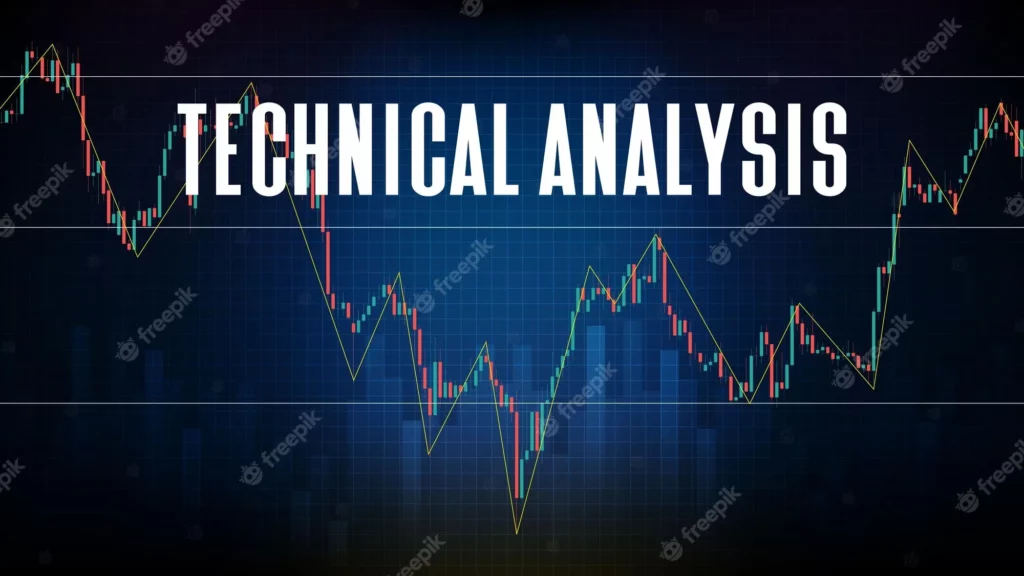
The study of historical market data, such as price and volume, is known as technical analysis. Technical analysts aim to predict future market behavior by using insights from market psychology, behavioral economics, and quantitative analysis. Chart patterns and technical (statistical) indicators are the two most common types of technical analysis.
KEY TAKEAWAYS
- Technical analysis attempts to forecast future price movements, giving traders the information they need to profit.
- Traders use technical analysis tools on charts to identify potential entry and exit points for trades.
- The market has processed all available information, which is reflected in the price chart, which is an underlying assumption of technical analysis.
The Power of Candlestick Patterns
Candlestick patterns are one of the most effective technical analysis tools. These patterns can help identify potential trend reversals or continuations and provide valuable insights into market sentiment. Let’s look at some of the most important candlestick patterns:
- Engulfing Bullish Pattern
When a small bearish candle is followed by a larger bullish candle that completely engulfs the previous candle’s range, the bullish engulfing pattern occurs. This pattern indicates a possible trend reversal from bearish to bullish and could indicate a buying opportunity. - Harami Bearish Pattern
When a large bullish candle is followed by a smaller bearish candle that is completely engulfed by the previous candle’s range, the bearish harami pattern is formed. This pattern suggests a possible trend reversal from bullish to bearish and may serve as a signal to sell or take profits. - The Doji Pattern
A candlestick pattern with a small body and long wicks on both ends is known as a doji. It represents market indecision and suggests that buyers and sellers are in equilibrium. A doji pattern can indicate a possible trend reversal, especially if it forms at critical support or resistance levels.
Trend Analysis and Moving Averages
Trend analysis is important in technical analysis because it helps traders determine the market’s direction. Moving averages are popular indicators for smoothing out price data and providing a more accurate picture of the underlying trend. Here are some examples of moving averages:
1. Simple Moving Average (SMA)
The simple moving average computes an asset’s average price over a given time period. The 50-day and 200-day moving averages are frequently used by traders to identify long-term trends. When the shorter-term moving average crosses above the longer-term moving average, a bullish signal is generated, indicating the possibility of an uptrend.
2. Exponential Moving Average (EMA)
The exponential moving average gives more weight to recent price data, making it more sensitive to market changes. Many traders prefer to use EMAs because they provide a more immediate indication of trend reversals. For short-term analysis, the 9-day and 21-day EMAs are commonly used.
Support and Resistance Levels
Technical analysis relies heavily on support and resistance levels. A price level at which buying pressure is strong enough to prevent the price from falling further is referred to as support. In contrast, resistance represents a price level where selling pressure is strong enough to prevent the price from rising further. Identifying these levels can assist traders in determining the best entry and exit points.
Using Technical Indicators
Technical indicators are calculated mathematically from price and volume data. They are used to gain more insight into market trends and to confirm or refute potential trading signals. Here are a few popular technical indicators:
- RSI (Relative Strength Index)
The RSI is a momentum oscillator that measures price movement speed and change. It oscillates between 0 and 100, with values greater than 70 indicating overbought conditions and values less than 30 indicating oversold conditions. The RSI is frequently used by traders to identify potential trend reversals or divergences. - MACD (Moving Average Convergence Divergence)
The MACD is a momentum indicator that follows a trend and consists of two lines: the MACD line and the signal line. When the MACD line crosses above the signal line, a bullish signal is generated, indicating the possibility of an uptrend. When the MACD line crosses below the signal line, it generates a bearish signal, indicating the possibility of a downtrend.
Risk Management and Stop Loss Orders
Without proper risk management techniques, no trading strategy is complete. Stop loss orders can be used to limit potential losses and protect your capital. A stop loss order instructs the seller to sell a security when it reaches a predetermined price level. Set a stop loss to reduce the impact of unexpected market movements and protect your investment.
Conclusion
Finally, mastering the art of technical analysis is critical for profitable stock market trading. You can make better investment decisions if you understand candlestick patterns, trend analysis, support and resistance levels, technical indicators, and risk management techniques. Remember to practice and fine-tune your skills in real-world trading scenarios, as experience is essential in developing technical analysis proficiency.
FOR MORE INFO CLICK THIS SITE:https://learningsharks.in/
FOLLOW OUR PAGE:https://www.instagram.com/learningsharks/?hl=en
